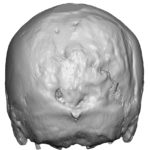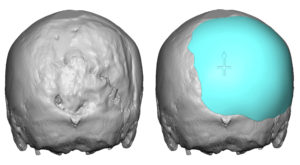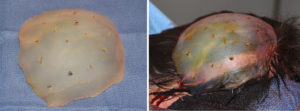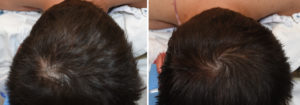Background: In pediatric craniofacial surgery one of the most known procedures is that of cranial vault reconstruction. Done for craniosynostosis and other severe congenital skull deformities, it involves the extensive removal of misshapen skull bones and their immediate reconstruction in infants and very young children. The success of these procedures is based on the remarkable bone forming ability of the underlying dura which only exists at very young ages.
While many infantile cranial vault reconstructions heal well, a full and complete skull thickness and shape does not always occur. Irregularities and partial bony defects are not rare. And in some cases small full-thickness bony defects may also persist. Numerous factors exists as to why the skull doesn’t heal completely including the extent of the bone removal, what size bone defects were left after reconstruction and the age of the patient when the surgery was done.
Some adults with skull contour defects after cranial vault surgery done in the first year or so after birth do present for secondary contour restoration. Their reconstruction options include and complete reopening of their scalp flap and application of bone cement or the placement of a custom skull implant done through a potentially smaller scalp incisional approach.
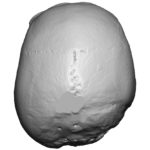




Case Highlights:
1) Infant cranial vault surgery can result in long-term skull contour issues due to partial and full thickness bony defects.
2) A 
3) Careful elevation of scalp tissues for implant placement from previous areas of skull surgery must be done in areas of known full-thickness bone defects.
Dr. Barry Eppley
Indianapolis, Indiana




